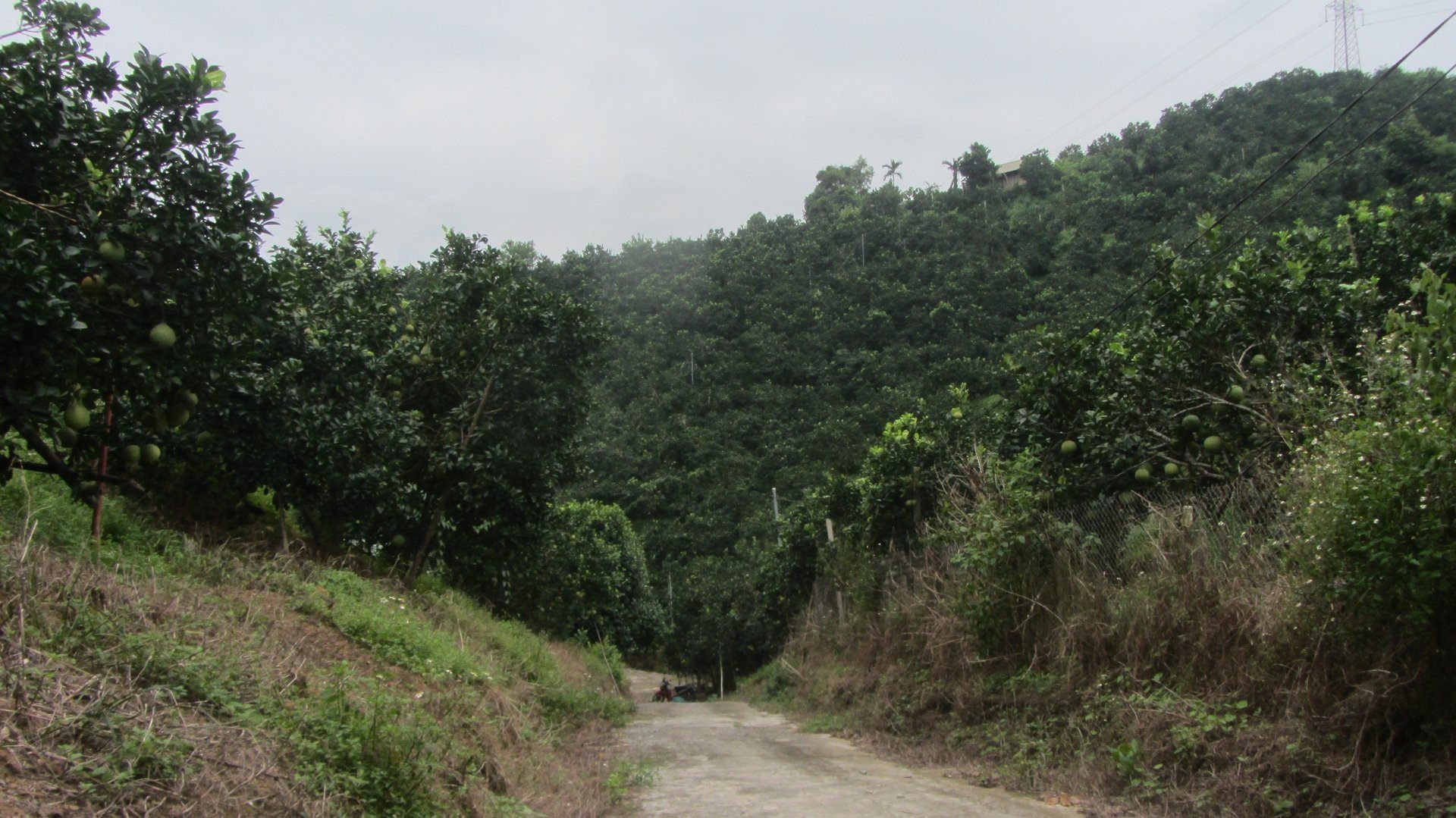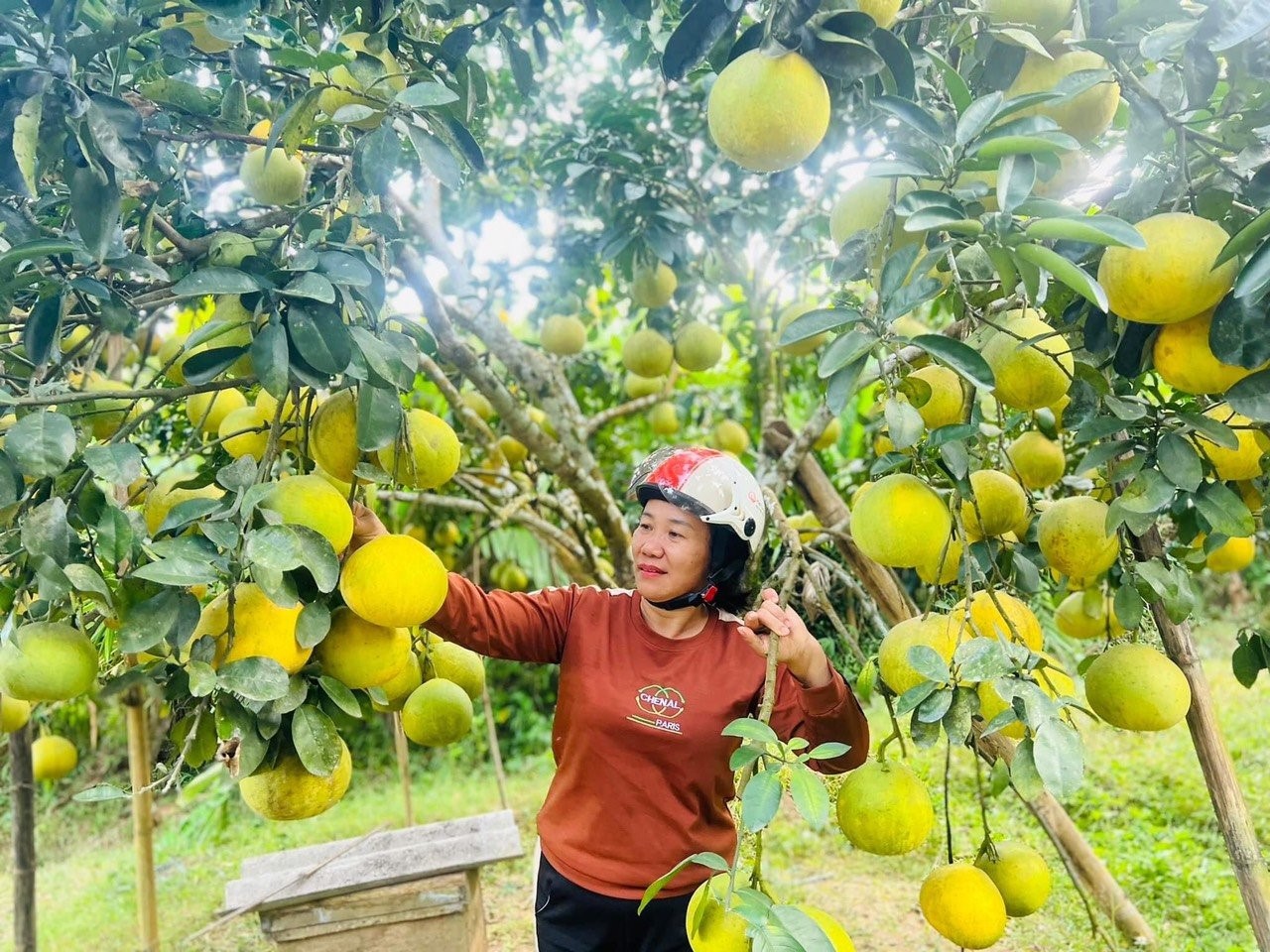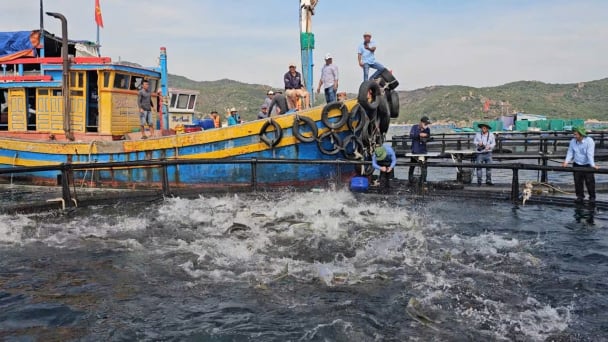May 21, 2025 | 02:58 GMT +7
May 21, 2025 | 02:58 GMT +7
Hotline: 0913.378.918
May 21, 2025 | 02:58 GMT +7
Hotline: 0913.378.918

Red grapefruit is grown all over the low hills in the mountainous district of Tan Lac.
Tan Lac (Hoa Binh) is a "barn" of red grapefruit with delicious quality, famous domestically and internationally. This locality gets this reputation thanks to the fact that the district has many natural conditions suitable for growing red grapefruit trees. To be more specific, the district has a hilly area at an altitude of 150–200 m, which is the concentrated living place of the majority of residents in the district and is also a suitable place for growing rice, vegetables, and specialty red grapefruit.
The weather and climate in Tan Lac have two distinct seasons. The rainy season is from May to October, and the dry season is from November to April of the following year. The rainy season often has heavy rain, hot sun, and a high temperature difference between day and night. In the dry season, in addition to cold and dry weather, there are also many very cold days. This is a suitable condition for grapefruit trees to complete their growth cycles during the year.
Preliminary surveys show that the district's terrain has no rivers but many streams, enough to provide irrigation water for rice cultivation and hill gardens growing grapefruit. The arable land here is red-yellow feralit, rich in humus and nutrients.

When Tan Lac grapefruit ripens, the skin turns from green to a slight pink and then pink-red at the end of the season.
The grapefruit growing area was mainly converted from a part of an acacia production forest. This forestry tree, with its nodular roots, has the ability to fix nitrogen from the air, helping to increase soil fertility. Thanks to that, grapefruit growing minimizes the amount of fertilizer, especially chemical fertilizers (nitrogen, phosphate, and potassium). At the same time, the district’s concentrated grapefruit growing areas are all located near Highways 6 and 12B, making it extremely convenient for fruit pre-processing and preserving for domestic and world consumption.
Although it is in the group of citrus trees, grapefruit is less susceptible to dangerous, difficult-to-prevent diseases caused by bacteria and viruses, such as Citrus Vein Phloem Degeneration disease. On the other hand, most of the grapefruit area here is grown on hills with low slopes, thick cultivation layers, and deep groundwater levels, so when it rains, the water will self-drain quickly and thoroughly without causing flooding, including local waterlogging in the garden that affects the growth and development of trees and fruits.
Thanks to that, while orange and tangerine trees planted in the same soil type can only be exploited for business for about 6–8 years and have to be cut down and replaced by plants of different families, a well-cared grapefruit tree will allow fruit harvest for 20–30 years or longer. Notably, the older the tree is, the higher the productivity, quality, and yield of fruits.
Dr. Nguyen Quoc Hung, Director of the Vegetable Research Institute, said that during the flower bud differentiation period, Tan Lac red grapefruit trees, although not as closely dependent on the air temperature and humidity as longan trees, still need dry, cold weather in November and December (air temperature ranges from 12 to 18oC) so that the tree has many flowers and fruits and a high yield. These factors are inherently natural features of the lowland communes of Tan Lac.
This is the reason why red grapefruit grown in Tan Lac yields large, intertwined fruits that are much sweeter and more delicious than grapefruit grown in other ecological regions of our country. Thereby, it can be said that nature has bestowed Tan Lac with a rare natural advantage, helping the red grapefruit "barn" here to develop sustainably.
According to Mr. Bui Dinh Hien, Head of the Tan Lac Department of Agriculture and Rural Development, the population living in the area basically consists of two ethnic groups: Muong and Kinh. Muong people account for more than 85% of the population. The rest are Kinh people who came here to build a new economy in the 60s of the last century, which is also considered an advantage, helping to create interference at the intellectual level and improve general awareness in the community. Thereby making it easy for production direction and management, policy implementation and transfer of technical advances, and promoting intensive farming of crops in general and grapefruit in particular.
In particular, Tan Lac red grapefruit also receives timely support from the Party Committee and government of provinces and districts, along with central specialized branches to strengthen the production of plants and animals with potential and strengths suitable for local climate and ecological characteristics.
Tan Lac red grapefruit grows and develops strongly and is less susceptible to pests and diseases than some other grapefruit varieties, such as green-skinned pomelo and Dien grapefruit. And the fruiting rate is very high; after 10–12 years of planting, grapefruit yields 300 fruits/tree. When ripe, the fruit has pinkish-yellow skin, with an average weight of 0.8–1.2 kg/fruit. Grapefruit cloves are pink-red in color and have a sweet taste, not bitter. Harvest is concentrated from late October to December. Fruits can be naturally preserved for over 2 months. This grapefruit variety has also been granted a collective trademark protection certificate by the Intellectual Property Office of Viet Nam (Ministry of Science and Technology) for Tan Lac red grapefruit products.

Tan Lac red grapefruit always produces many intertwined fruits.
Being bestowed with many potential advantages to expand red grapefruit farming, but Tan Lac district still advocates stably maintaining the existing 1,250 hectares of grapefruit, with fruit output reaching over 20,000 tons. The district aims to prioritize the application of technical advances in production towards productivity, quality, and a sustainable increase in income value; enhance advertising, trade promotion, and expanding grapefruit domestic consumption market and export; and maintain the reputation of the "Tan Lac red grapefruit" brand. Thereby, proceed to replace all degraded and poor-quality grapefruit trees; strive by 2025 to have 500 hectares of grapefruit recognized as meeting GlobalGAP, organic, VietGAP, and GAP standards or certified to ensure food hygiene and safety. At the same time, building a product brand to achieve a harvest value of VND 450 million/ha of grapefruit farming or more.
Translated by Huyen Vu Thu

(VAN) Khanh Hoa is investing over 545 billion VND to develop 240 hectares of high-tech marine aquaculture in order to guarantee a consistent supply of seafood exports and achieve the USD 1 billion target.

(VAN) Minister of Agriculture and Environment Do Duc Duy held a meeting with Soopakij Chearavanont, Chairman of C.P. Group, on May 15.
/2025/05/16/3800-0-nongnghiep-143756.jpg)
(VAN) Suntory PepsiCo Vietnam coordinated with the Ministry of Education and Training to implement an education program on water conservation, reaching nearly 1 million primary school students nationwide.

(VAN) Vietnam’s TH Group officially put its high-tech fresh milk processing plant into operation in the Russian Federation, marking a historic moment as the first TH true MILK cartons were produced in Russia.

(VAN) Use of high-quality broodstock and biotechnology is regarded as the most effective approach to ensuring sustainable and economically viable shrimp aquaculture ahead of climate change and the emergence of increasingly intricate disease patterns.

(VAN) Carbon farming is a form of agricultural practices that helps absorb more greenhouse gases than it emits, through smart management of soil, crops, and livestock.

(VAN) This is a key content of the Memorandum of Understanding recently signed between the Vietnam Fisheries Society and Kunihiro Inc of Japan.